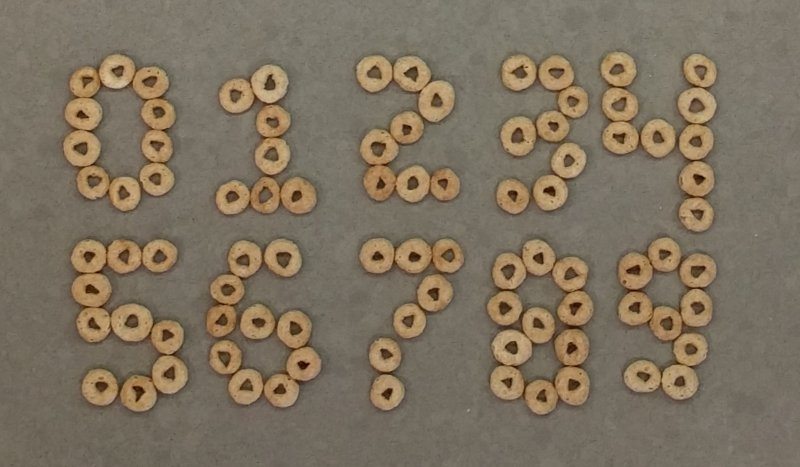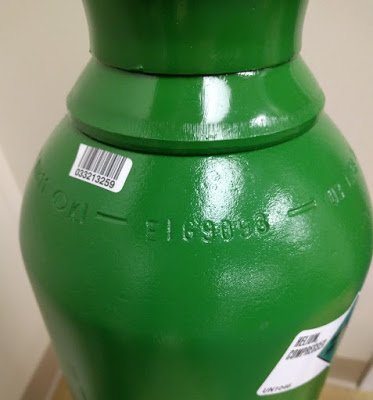When tracking your equipment, every item must have a unique identifier (ID) assigned so the system can tell them apart. This can be called the “tracking ID”, “tag ID” or “barcode."
But how do you choose the format of that unique ID in your serial number tracking system? What do you encode into the barcode?
Choosing a Tracking ID
Depending on your industry, this might already be decided for you. The GS1 organization helps many industries standardize their barcodes. As a company, you would register a globally-unique barcode prefix with GS1. Your company is then free to use the remaining space in the barcode to encode your own unique numbers.
If GS1 barcodes aren’t right for you, then the most important thing is that you choose numbers that are going to be unique among all your supply chain partners, among all their assets and all the systems they might use.
Many assets have serial numbers assigned by the manufacturer. The serial number may be on a sticker, a metal plate, or indelibly stamped or engraved into the asset.
TrackAbout recommends capturing the serial number in the asset tracking system whenever possible. The serial number serves as an extra way to find an asset should the barcode or RFID tag become unreadable or lost.
You might think, “Hey, the manufacturer went to all this trouble to stamp this serial number on here. It’s unique, let’s use it as our tracking ID.” Please believe me when I say this is a Really Bad Idea.

We can’t stress this enough: Do not use a serial number as your tracking ID.
Let’s talk about why.
Serial numbers are NOT unique!
Manufacturer-assigned serial numbers are NOT unique and TrackAbout has the data to prove it. Serial numbers may be unique among assets of one specific type from one specific manufacturer, but they are not guaranteed unique among assets of all other types from all other manufacturers.
Truthfully, you should not even trust the manufacturer to keep their own serial numbers unique over years and years of manufacturing assets, through changes in company ownership, mergers and acquisitions, across serial number tracking systems, etc.
Serial numbers become even less likely to be unique once you begin exchanging assets with your suppliers, customers and other business partners.
Having a self-assigned unique tracking ID really matters when you’re using a system like TrackAbout that lets you exchange and integrate asset tracking data with other parties.
You’ll have to print your own tags
Let’s say you’ve chosen to ignore our advice. If you insist that your tracking IDs should be the same as your serial numbers, then you’re on the hook for printing all your own tags. You’ve got to get those serial numbers onto labels.
You’ll need a software system that allows you to easily collect serial numbers and print labels.
You’ll need to set up a labeling solution at each of your locations where you’re adding assets to the serial number tracking system. Good label printers and label stock aren’t cheap.
At these locations, you’ll either need to make your labeling solution mobile so you can take it around to the various places where your assets live or you’ll need to bring all your assets to the labeling station. If you want to be able to add more than one asset at a time to the system, you might need multiple labeling systems per location.
You’ll want the entire system to be integrated so you’re printing and affixing your asset tags at the same time and in the same place where you’re adding assets to the system, plus collecting any other meta-data about your assets that you want to track.
It’s unlikely you’ll be willing to purchase high-quality label printers for all your locations that will beat the quality a professional label printing company can produce. The labels TrackAbout sells its customers are high quality, extremely durable and proven over many years of use in the field. They have UV protection to prevent fading from sunlight. They have highly-aggressive adhesive so they stay put once affixed to an asset. They are made of a strong material that resists tearing and other physical damage. Your self-printed labels aren’t going to last as long.
For more on TrackAbout’s labels, see What Makes a Great Barcode Label?
People are really (really) bad at accurately reading and writing serial numbers
Serial numbers are challenging for people to collect under the best conditions. It’s especially hard to accurately read serial numbers under poor lighting conditions or while transcribing from an asset that’s dirty, been painted, scuffed, etc.
Some letters and numbers look the same to the human eye.

Here’s a nice, clean, painted, well-maintained gas cylinder. Perfect conditions.
- Is that a zero or a letter O (or maybe a D or a Q)?
- Are you looking at an uppercase I or a lowercase L?
- A lowercase L or the number 1?
- G or 6?
What will your worker decide? Will they care enough to make the right choice? Is there even a “right” choice?
Will the person who tries to look up that asset three months from now by keying in the serial number make the same decision the last person did? They might not find the asset at all. Perhaps they’ll assume the asset wasn’t added to the system, and add another one just to be safe.
In support of unique tracking IDs
There are many benefits to going with unique tracking IDs over serial numbers. Here are just a few.
- Checksums - A checksum is a form of automatic error correction. It's a digit that is calculated from the other digits of the ID using a standard formula. The calculated digit is placed at the end of the ID. It's recalculated by the scanning engine to ensure the scanner read the tag correctly. More importantly, if you have good software, the checksum digit will also be checked whenever someone manually keys in the ID. This is a huge benefit that goes a long way to ensuring quality data entry.
- Standardization - When you go with a unique tracking ID, you have a say in the format. You can ensure it's, say, always 10 digits, for example. This enables your workforce to spot anomalies and avoid scanning the wrong barcodes.
- Customization - Some of our customers assign prefixes to their tracking IDs that carry special meaning. So starting a barcode with a "C" might indicate a customer-owned asset. We can build special workflows and logic around this.
We have the evidence
As a global provider of cloud-based asset tracking software, we have incontrovertible evidence that duplicate serial numbers exist both within a single customer’s TrackAbout environment and in aggregate across all the assets that TrackAbout manages. We see the problems and frustrations this causes.
When a customer insists on using serial numbers as the tracking ID, and when two assets have the same tracking ID, the system can’t tell them apart. When your worker scans the barcode on either asset, the system might think they are one and the same. Or, a smarter system might know there are duplicates and prompt the user to reconcile, to choose the correct asset. Will the user choose correctly? It’s more likely that in an offline, disconnected environment, the worker’s handheld computer is not aware that there are duplicates, and just lets the scan go through.
Now a problem has been created down the line that someone else is going to have to solve. Which asset gets attached to the delivery record? The worker is done, out of the picture, moved on to the next customer. Someone miles away without visibility into the situation is going to have to make a judgement call. And odds are good without perfect information, they’re going to make the wrong call.
A wrong decision might remove an asset from a customer’s balance to move it to another customer. If your company depends on rental revenue, you’ve just lost out.
We have one very large customer who chose to use serial numbers as the tracking ID. Years later, they've told us they wish they had not as it's causing the kind of problems mentioned above. The customer now has millions of assets under management and the cost of relabeling them to move to unique tracking IDs is daunting. Their data quality is not as good as it could be, and as a result there are all-too-frequent headaches for both them and us.
You don’t need this hassle when it’s easily avoidable. Don’t use the serial number as your tracking ID.
.png)

.png)

